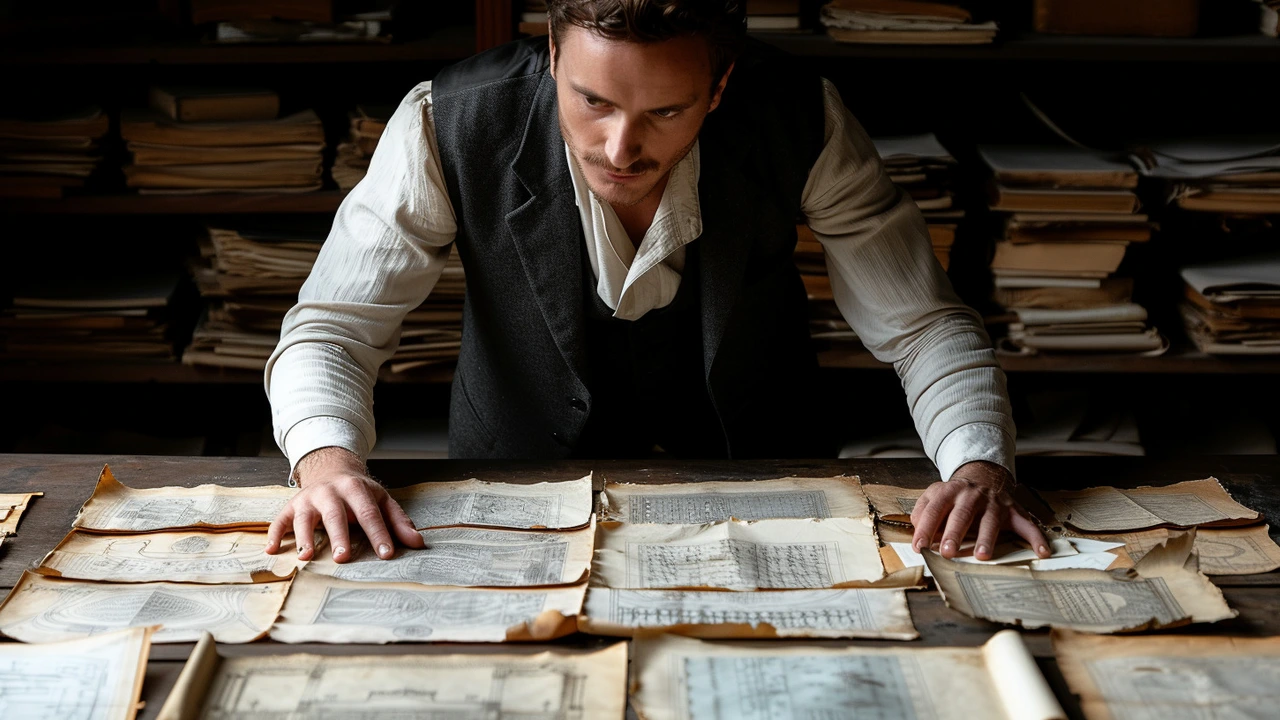The Art of Extravagance: Baroque Architecture
 Nov, 11 2023
Nov, 11 2023
The Mastery of Excessiveness: Understanding Baroque Architecture
Have you ever walked into a vast cathedral, ornately adorned from floor to ceiling, and felt an overwhelming sense of awe? That's the feeling that a good example of Baroque architecture aims to evoke. This style popularized between the 17th and mid-18th centuries in Europe, is the epitome of extravagance. It's more than just aesthetics. This architectural approach speaks fluently the language of grandeur, drama, and emotion. It was the epoch when architects started transforming stone into theatrical plays, telling stories that echoed through the centuries.
A Journey through the Origins of Baroque Architecture
The journey of Baroque architecture began in Italy around the late 16th century. It's no surprise then that it was significantly influenced by the Renaissance movement that had reached its peak just before the advent of Baroque. However, Baroque was an entirely different poetic legend in the making. It was born out of poignant desire to break away from the staid predictability of the High Renaissance. As a style, it dared to transcend the harmonious balance and restrained elegance that were characteristic of Renaissance architecture.
And dare it did. The architectural form of Baroque sought to seduce and awe. It was intent on dropping jaws and widening eyes. Imogen and I had a strikingly similar experience during our trip to Italy, where we first encountered the splendor of Baroque in person. The architecture, with its illusionistic effects, literally seemed like it was breaking boundaries, reaching out to embrace us. It was then I truly understood the authenticity of the period's name, which is believed to have originated from the Portuguese term 'barroco', meaning an oddly-shaped pearl.
Poetry in Stone: Distinguishing Features of Baroque Architecture
Now, coming to the features of Baroque architecture that makes it extraordinarily distinguishable. Firstly, it's a burst of dynamic shapes and complex floor plans. Unlike the symmetrical and balanced forms of the Renaissance, Baroque architecture sprung to life with an almost organic quality. Secondly, Baroque relished its love for grandeur. The balance was not sublime but ostentatious, full of opulent designs, large-scale ceiling frescoes, substantive structures and opulent use of ornaments. It was all about creating an overwhelming spectacle for the observer, an invitation to a visual feast.
Remember the fable of 'Jack and the beanstalk'? While Harris and Elsie were kids, it was their favourite bedtime story. As I narrated the tale of Jack climbing the gigantic beanstalk, I would often compare it to exploring a Baroque structure. Why? Because it's filled with surprising elements that leaves the observer in anticipation of what comes next. This is achieved brilliantly through the elaborate and fluid use of curves. Straight lines and stark contrasts were replaced by voluptuous curves, spiral columns and flaunting scrolls that had a compelling dramatic effect.
Tip: If you're an architecture aficionado keen on studying Baroque, always keep an eye out for the bold use of light and shadow. This was a conscious design decision made to accentuate certain elements and create a sense of depth.
The Impact: How Baroque Architecture Influenced the World
When we talk about the impact of Baroque architecture, we're delving into a rich history of influence that extends beyond Europe. The aesthetic and symbolic aspects of Baroque architecture made a significant impact on church architecture. It was used to communicate the glory of the divine in a resonating way which till date, continues to engross onlookers. Its influence also spilled over to theatre design. Those elaborate opera house interiors with dazzling chandeliers, intricate ceiling frescoes and grand staircases? That's Baroque doing its magic.
Also, who can ignore the indelible influence of Baroque when it comes to interior design? The love for ornate detailing, rich color palette, and luxurious fabric - all points back to this flamboyant style. Even in the modern era, the lavish vibe of Baroque continues to inspire, carving its way into contemporary residential and commercial interiors.
Interesting Fact: Some of the world’s most iconic structures, such as the Palace of Versailles in France and St. Peter’s Basilica in Vatican City, are prime examples of Baroque architecture!
So, when you think about Baroque architecture, consider it not merely as a style, but as a bold dialogue between art and viewer. It’s a theatrical spectacle etched in stone. It’s a storytelling mechanism. It’s an emotional narrative dictated through light, shadow and scale. And most importantly, it’s the art of extravagance, meant to awe, inspire and, above all, to evoke an emotional response from its spectators. In these regards, Baroque architecture is, quite simply, the fruition of a timeless fairy tale coded in the language of design.